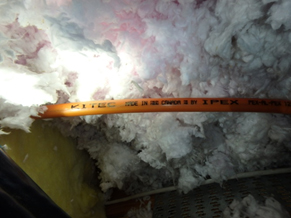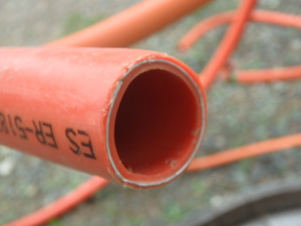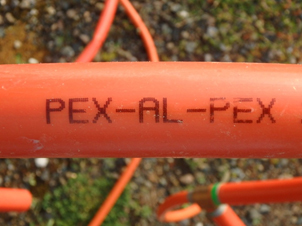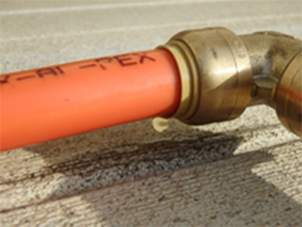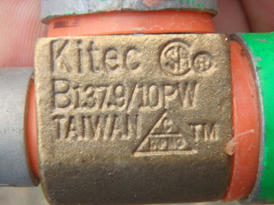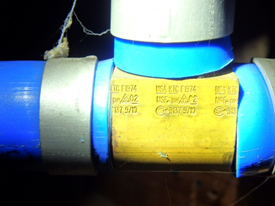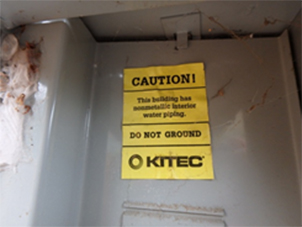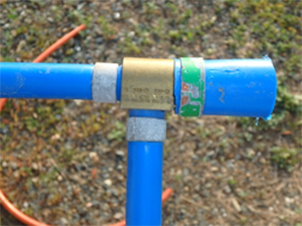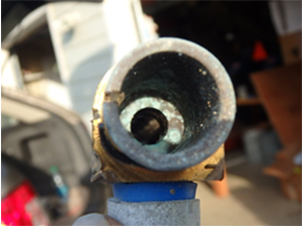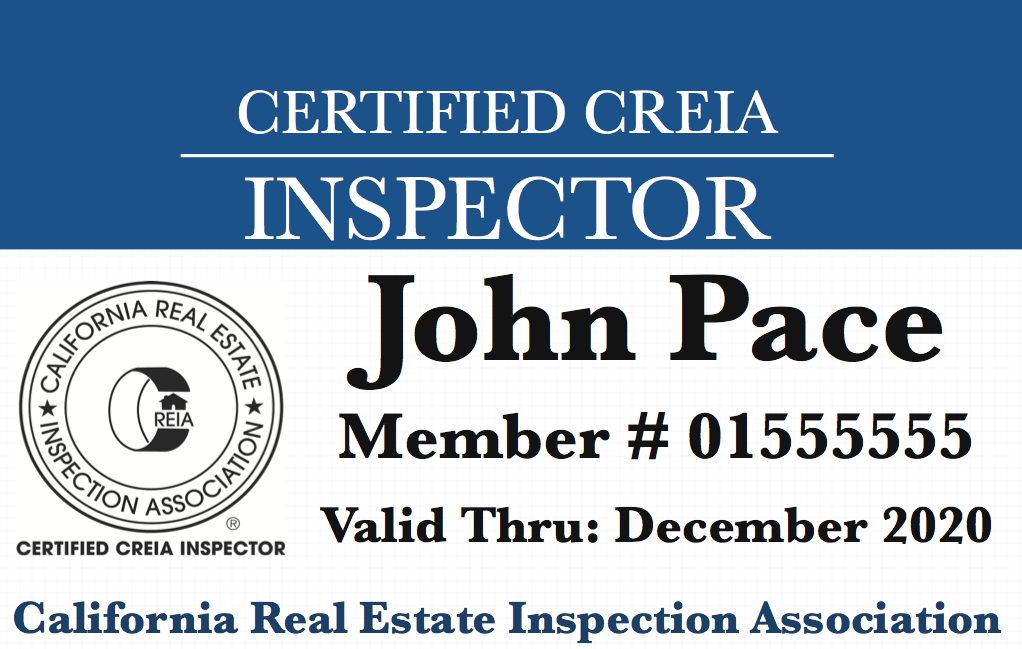KITEC Water Supply Piping and Brass Fittings: What You Need to Knowby Rick Hartmann Home Inspection Plus, Inc. Lincoln, CA 5/15/16 If you have not heard about 'KITEC' yet, you probably will sooner than later. KITEC is a brand of water supply pipe and brass fitting which was manufactured by Canadian pipe manufacturer IPEX. The brass fittings were produced from 1995 until 2005, when IPEX issued a recall on the fittings due to failures. In December of 2007, IPEX also discontinued the manufacturing of KITEC piping and sent notices to all of its distributors, notifying them that they should send any unused product back for a refund. One could expect the piping continued to be installed in homes into 2008.
Unfortunately, the only cure to prevent leaks in the KITEC water supply system is to remove it all from the home. It is not a question of if it will fail, but when. I have heard reports of people stating that only the fittings need to be replaced, however, that is not true. No other fittings are compatible with KITEC piping. Push fit fittings (SharkBite) do not fit KITEC piping. It would also be foolish to try to replace fittings and continue to use piping, which in my opinion and statistical information, is equally problematic. I have heard reports of plumbers installing pressure regulators and dropping the homes water pressure to 40 psi. That won't buy you more time.
While CREIA inspectors are required to inspect the water supply piping in visible areas, they are not required to identify the brand or determine if it has been subject to any recalls or class action lawsuits. You should ask your home inspector what type of water supply piping is installed and ask them to identify it, if they can. Often, you can find a sticker in main electrical panel which may provide a clue. However, this sticker is not always accurate, as it is only there to alert the electrician of plastic water supply piping being installed. Plumbers have different stickers from different PEX manufacturers on their trucks, and it doesn't necessarily mean that a KITEC system is installed if there is a KITEC sticker in the panel. Even though copper piping is sometimes visible at water supply valves under sinks, that just may be a copper 'stub-out' connected to PEX piping in the walls. It doesn't mean that the water supply piping is all copper. Often, the only place where the water supply piping can be identified is in the attic. Sometimes, the water supply piping is not visible due to it being buried in insulation or contained in the walls and not even installed in the attic. CREIA inspectors should note on their report that the water supply piping was not visible if they couldn't see it. It's beyond the scope of the inspection to dig through insulation to try and find it. It's certainly beyond the scope of the inspection to pry back escutcheons or poke holes in the walls. You may wish/need to have a plumbing contractor take a look, which would probably involve an invasive inspection.
For homeowners who have KITEC piping installed in their homes, there is some relief. A $125 million settlement fund for US and Canadian residents (excluding Clark County, NV), which became final in 2012 is accepting claims until Jan 9, 2020. According to www.kitecsettlement.com a claim form can be submitted, even if you have not experienced a leak. I haven't heard reports of how much anyone has gotten who has submitted a claim. One can expect a re-pipe in a 1500 sf, single story home to cost approximately $8000-$12000. Possibly more, depending on the complexity and if any of the piping is installed under the slab.
|


